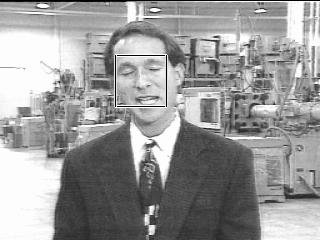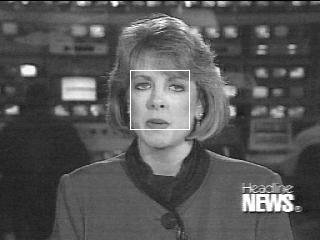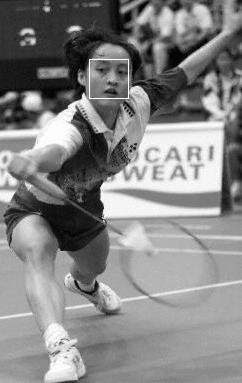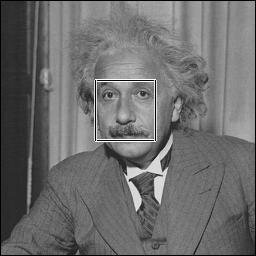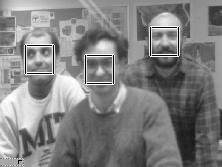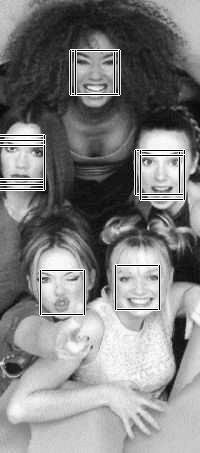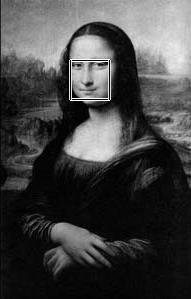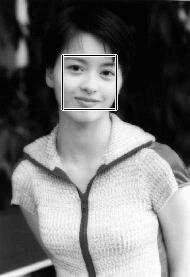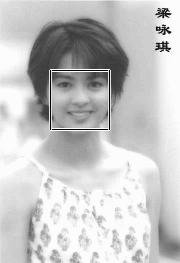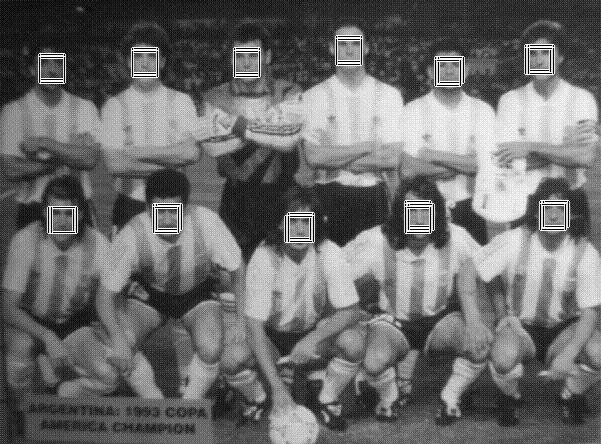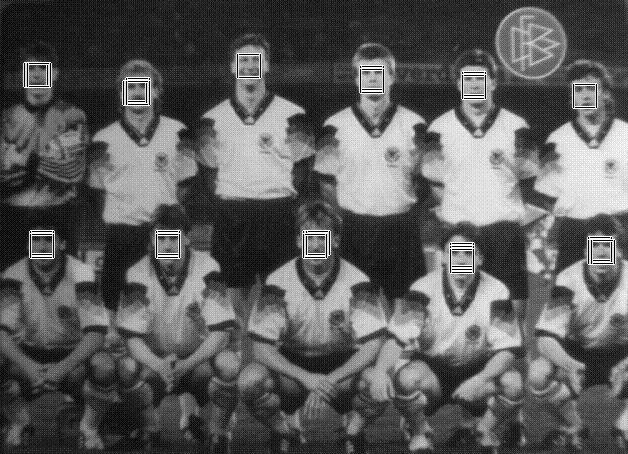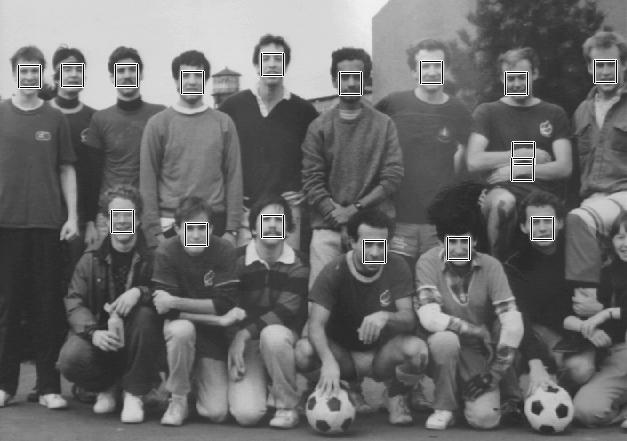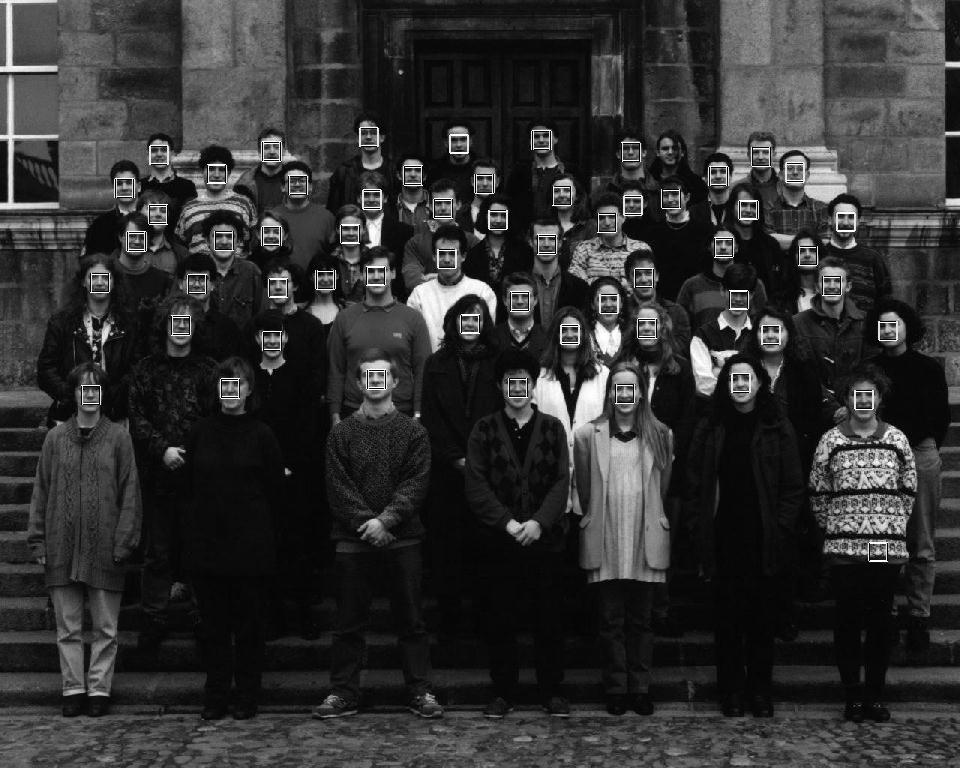
A canonical training face sample
The trainig patterns are preprocessed to normalize the image intensity values. They are then group into several clusters of faces and non-faces.
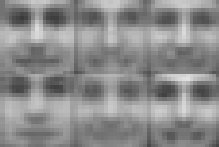
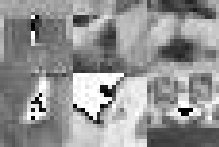
Centroids of six face (left) and six non-face clusters.
Each cluster is approximated by a Gaussian distribution. Principal components of the distribution is extracted and used to compute the distribution more accurately while components of smallest eigenvalues are discarded. After that, LDA is applied to maximize separability between clusters.

Multiple neural networks with arbitration for classification.
